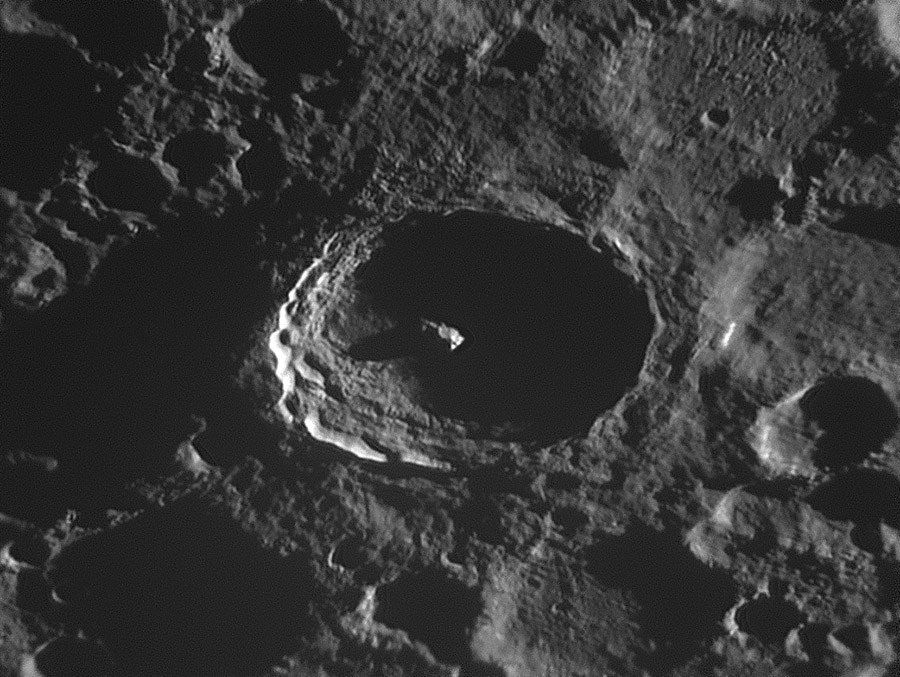June 23, 2014
A Lunar King
image by Leo Aerts, Belgium
If lunar craters were medieval people, Tycho would be king of a broad fiefdom. Its regal rays envelope, nay claim, a wide swatch of the visible hemisphere, and the crater itself is a majestic treasure of the first order. What I like of Leo's highly textured, high resolution view is the massive shadow of the central peak, which Leo commented, seemingly floats on a black blanket. There is a blanket here, the ejecta that pelted nearly every square centimeter of the region shown. One possible piece of debris is the 6-7 km long (thank you, QuickMap) bright ridge just east of Tycho. Unfortunately, QuickMap doesn't advance our understanding of this mass, which might simply be a Sun-facing ridge related to the intersection of Tycho's rim deposits with the pre-existing Pictet crater (QuickMap's nomenclature font has been made smaller than it used to be - hard to read). With all the rough terrain it seems a wonder that Surveyor 7, which landed just north of Tycho in January of 1968, didn't hit a big boulder and crash. But looks are deceiving, for even young lunar surface material is relatively smooth at the scale of a lander. But all previous lunar landers were lucky to avoid catastrophy-causing boulders.
Chuck Wood
Technical Details
June 6th 2014. Celestron 14", 1.8x barlow, dispersion corrector, redfilter and webcam DMK21AU618.
Related Links
21st Century Atlas chart 15.
COMMENTS?
Click on this icon File:PostIcon.jpg at the upper right to post a comment.




